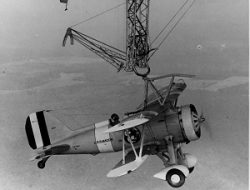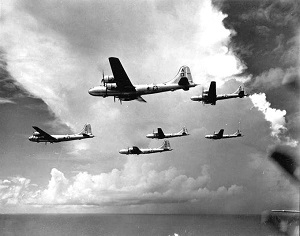On this day in 1935, the airship USS Macon goes down off the coast of California. Capable of launching and recovering fighter interceptors in mid-flight, the loss spells the end of the US Navy’s experimental flying aircraft carrier program.
USS Macon (ZRS-5)
USS Macon (ZRS-5) was a rigid airship built and operated by the United States Navy for scouting and served as a “flying aircraft carrier”, designed to carry biplane parasite aircraft, five single-seat Curtiss F9C Sparrowhawk for scouting or two-seat Fleet N2Y-1 for training. In service for less than two years, in 1935 the Macon was damaged in a storm and lost off California’s Big Sur coast, though most of the crew were saved. The wreckage is listed as the USS Macon Airship Remains on the U.S. National Register of Historic Places.
Akron-class airship
Less than 20 ft (6.1 m) shorter than Hindenburg, both Macon and her sister ship Akron were among the largest flying objects in the world in terms of length and volume. Although both of the hydrogen-filled, Zeppelin-built Hindenburg and LZ 130 Graf Zeppelin II were longer, the two American-built sister naval airships still hold the world record for helium-filled rigid airships
Please read : February 6, 1778 : The Franco-American Alliance














